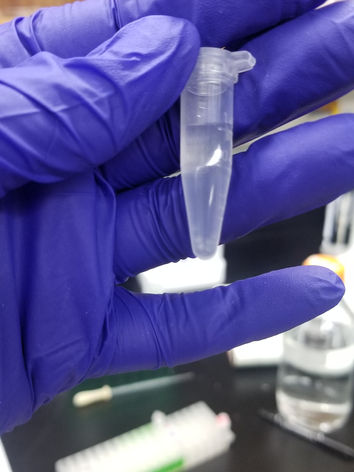
Research
Since Spring of 2019, I've been conducting research with the Howard Hughes Medical Institute, and then since Spring of 2020 with the NIH U-RISE program. Currently, I conduct research in the Developmental Biology lab of Dr. Rachel Brewster, and I am currently studying the Effect of Hyperglycemia on the process of Neurulation in Zebrafish. Specifically, its mechanistic conservation with pregnant women with diabetes and the prevalence of birth defects in the neural tube.
RESEARCH ABSTRACT
Neurulation is the process by which the neural plate converges to become the neural tube- the progenitor of the brain and spinal cord. Neurulation can be studied in many model organisms, and in this case, it is studied in Danio rerio, otherwise known as zebrafish, as there is conservation between zebrafish and humans.
Problems in neurulation result in the formation of neural tube defects (NTDs) that can be fatal in infants and affect over 300,000 newborns each year. NTDs continue to affect the population and although there is lack of clarity on the cause, it is known that environmental anomalies such as hyperglycemia have been known to be contributory of NTDs. Maternal diabetes and hyperglycemia are teratogens that give way to birth defects and affects the development of the neural tube, increasing the prevalence of NTDs in fetuses.
The reactive oxygen species (ROS) that causes oxidative stress is induced under diabetic conditions and is key in the formation of NTDs in cases of maternal hyperglycemia. This brings about the question “does hyperglycemia cause NTDs in zebrafish as it does in humans, and if so, how does hyperglycemia increase ROS and cell death in the developing neural tube?” To do this, In Situ Hybridization (ISH) - a technique used to visualize where a specific DNA or RNA transcript is localized- is used on four-hour post fertilization zebrafish embryos placed in various concentrations of glucose solution until they have reached a hallmark stage in neural tube development.
By performing an emx3 ISH, we can analyze the forebrain where neurological manifestations of hyperglycemia produce structural changes in the development of the neural tube. The results from the most recent imaging of the embryos show that as the percent concentration of glucose increases, the neural folds -which are to be completely narrowed under regular development- are widened, showing the promise of the results of the research.
If NTDs are confirmed, further investigations determining if hyperglycemia increases the ROS and rate of cell death (potential underlying causes of the NTDs) within the neural tube will be conducted. If NTDs are seen, then zebrafish can be further established as a new model organism to study the effect of environmental factors on neural tube development in humans.
As my grand challenge is engineering better medicines, biomedical research and translational research would prove to be most useful. The research that I have conducted is biomedical in nature as it relates the effect of a hyperglycemic environment on the development of the neural tube (precursor of the brain and spinal cord) in embryonic development in zebrafish and how that translates as a model organism to pregnant mothers who have diabetes.
In terms of engineering better medicine, I am not so much interested in the purely scientific aspect of drug design and synthesizing vaccines for example as I am in specifying and tailoring medicine for individuals and making sure things like race and ethnicity are taken into consideration when giving medical treatments.
With this research, we can establish zebrafish- a model organism that lays in vast quantities and externally as opposed to internal gestation- as a model organism that can be used to study neural tube defects in specific cases such as the environmental factors of high glucose and diabetes.








